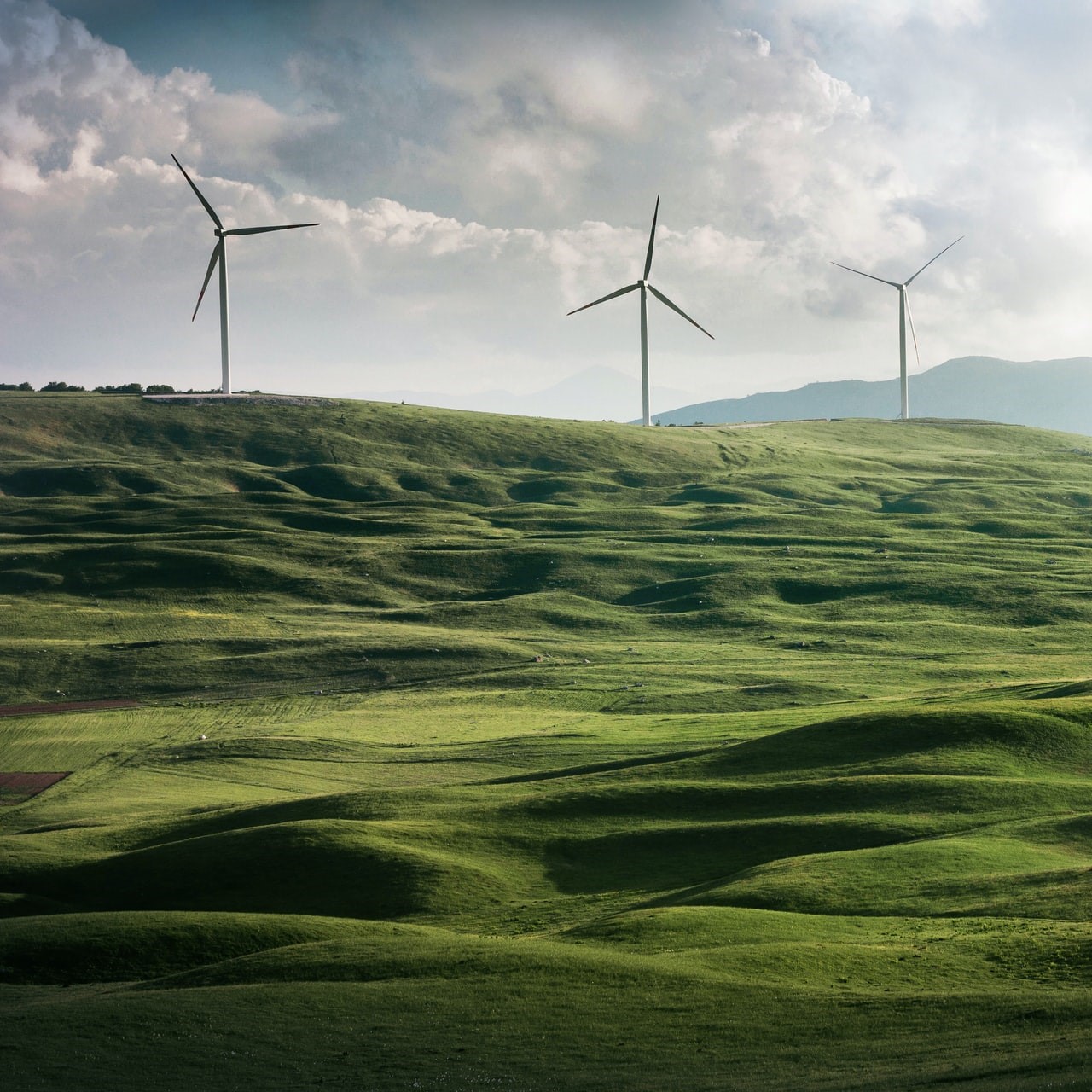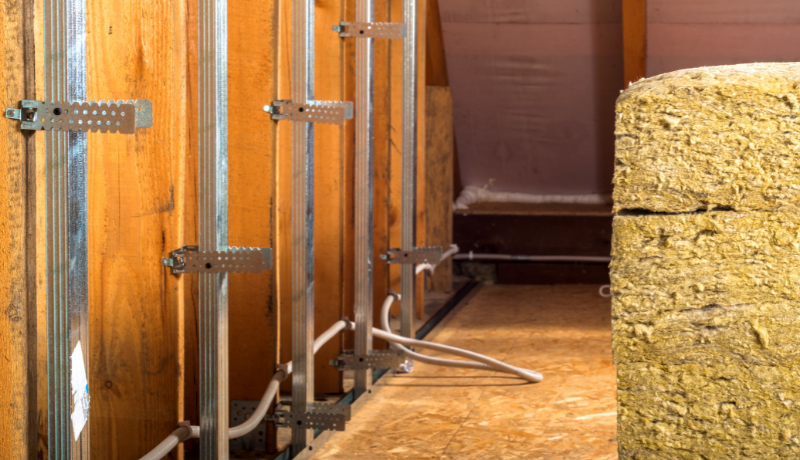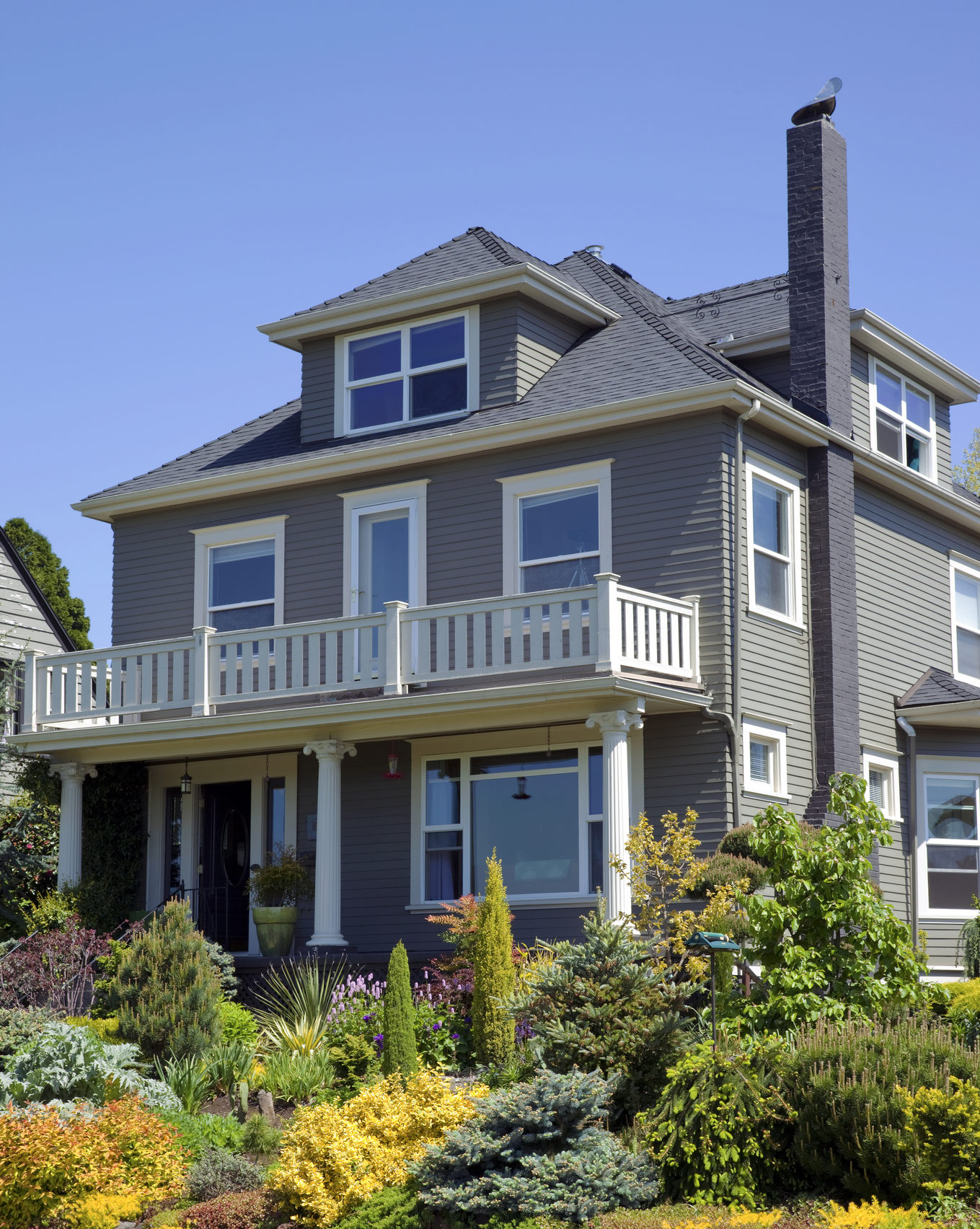Some of the links in this article are affiliate links, meaning at no additional cost to you, we will earn a commission if you click through and make a purchase. Thank you for helping us continue to bring you great content.
Almost everything we need for our survival is linked to our natural environment, and by living more sustainably, we can decrease the negative impacts our lifestyles often lead. Making a home and living a life that is intentionally ethical can support sustainable decisions and practices in numerous aspects of our lives. Homeowners often hear words like sustainable or eco-friendly, or environmentally friendly. But what does ethical sustainability mean? Let’s look at this in the context of homeownership.
When your goal is to become more environmentally sustainable, you do what you can to lessen the negative impact you have on the environment. The main strategies are to reduce your consumption of resources while also actively decreasing negative environmental outcomes like toxic emissions, destruction of natural habitats, and reducing waste. All with an eye to the future.
Ethical Sustainability
Being an ethically sustainable homeowner means that you’re making intentional decisions about the way your property, as well as your household, impacts both the natural environment and society. Historically, the process of building a home or even making modifications to an existing home would produce a cascade of negative effects on the environment—both locally and in the wider world. But, when homeowners make values-based decisions with the intent of reducing their home’s negative impact, they optimize their home’s energy and water efficiency and make some or most purchase decisions based on sustainability and social responsibility.
Ethical sustainability means that homeowners look at the big picture, beyond dollars and cents, when they consider their home’s design, systems, fixtures, and furnishings. Before making a purchase decision, think about how a product was sourced. Where is the product from? How far did it travel? What materials is it made of? What are the labor practices, pollution controls, and sustainability certifications in place to ensure it meets real criteria? How long will it last, and can it be recycled at end of life?
Terms like eco-friendly, green, sustainable, or even nontoxic can be vague and are largely unregulated. Greenwashing is when a company or organization puts more effort into portraying themselves as environmentally friendly than into actually minimizing their environmental impact. Eco-friendly means it’s not harmful to the environment, but we have to dig deeper. Companies that are truly ethically sustainable are generally very transparent about their resources and manufacturing processes. There are multiple science-based sustainability certifications that describe a product’s lifecycle from start to finish, helping purchasers and consumers make responsible choices and improve quality of life. Watch particularly for products that might be healthy or efficient in your home, but their overall impact on the Earth “from cradle to grave” could be drastically negative.
Conspicuous Conservation
Investing in emerging and improved green technology for your home both stimulates the demand for more ethically sustainable buying options, thus lowering the overall prices of green products across the marketplace. The conspicuous consumption of eco-friendly products and mainstream green trends shows that you invest according to your values and believe in environmental justice. You don’t just talk the talk, Sure, an eco-friendly lifestyles feels cool at the moment; but the steps you take have impacts far beyond your own home’s health and finances.
Young people, particularly, are more intentional about their lifestyle, and as they become homeowners their decisions will be more ethically sustainable. This next generation of homeowners understand that their choices and demands can influence business behavior. The Environmental Protection Agency (EPA) breaks the principles of sustainability into three categories, or pillars: Environmental, Social, and Economic. The tracks with the business concept of the triple bottom line: profit, people, and the planet. Understanding how ethics and sustainability are connected is crucial to unlocking decision-making strategies—wherever you call home.

1 Energy Use
Energy as a resource is vital to our well-being, and the need to reduce your household’s energy consumption has never felt more important. High energy costs and reduced dependence on fossil fuels go hand in hand, motivating homeowners to make energy-efficient upgrades. Energy efficiency measures and renewable energy resources can reduce greenhouse gas emissions, lower energy costs, and improve air quality and public health. This is an ethical triumvirate.
To help consumers combat high energy costs, the Department of Energy (DOE) announced in December 2021 an $18.6 million expansion of the existing residential Weatherization Assistance Program (WAP), focusing on households at or below 200% of the poverty income guidelines. The expansion includes increased eligibility for single-family, multifamily, and manufactured homes to help owners with particularly burdensome energy bills. Secretary of Energy Jennifer M. Granholm stated: “Weatherization retrofits and home energy upgrades – like heat pumps, LED lighting, insulation and sealing up leaks — cuts monthly energy bills for families by up to 30%, and makes our air healthier.” Regardless of whether you’re exploring sustainable forms of alternative energy for your home, all retrofits begin with energy efficiency. Several of these measures are the easiest changes to make at home.
Install Energy-Efficient Appliances
By utilizing energy efficiently, you’ll reduce the amount of air pollution created, including greenhouse gasses. Upgrade your must-have appliances, and buy items that are certified as energy efficient. Energy Star–certified products are the gold standard: providing unbiased information to people looking to make ethical, well-informed purchases. Make sure that your home’s heating and air-conditioning are controlled automatically to prevent waste and shift usage to off-peak hours: smart thermostats are highly effective and easy to operate. Go further and consider appliances made from recycled materials, using sustainable manufacturing processes and practices, using ethical employment practices. At the buying stage, consider disposal of your existing equipment and the distance the new product will travel to your home.
Lighting
Making ethically sustainable choices about how you light your home is likely the easiest way to make sure your next purchase is a values investment. Simply replacing incandescent and compact fluorescent lighting in your home with LEDs can reduce your home’s lighting energy needs by 75%. For lighting fixtures in your home, look at brands that are environmentally conscious. For instance, Minnesota-based Bicycle Glass eases the burden on local landfills by creating beautiful, handcrafted lighting made from locally sourced, reclaimed glass.
Renewable Energy
The path to Net-Zero Energy relies on renewable energy technologies like solar panels as cost-effective alternatives to standard fossil-fuel energy sources. Technologies like wind power and geothermal heat pumps are only available to certain homeowners. But millions of Americans take advantage of “green” utility pricing programs, purchasing electricity from renewable resources from their local utility.
2 Water Use
Being ethical about your home’s water usage includes awareness of how water use impacts biodiversity in your region and the amount of fresh water available for human consumption in your region. Home systems that can deal with issues like leaks and water wastage, water recycling, and controlling sprinklers will both lower utility bills and help your region respond to drought. Here are some smart first steps.

Installing Water-Efficient Products
Making sure your home uses water efficiently is the best way to ensure that clean, usable water is available for future generations; particularly in drought-prone areas like the Western US where the competition for water rights is high. To help protect our water resources, the EPA has created WaterSense to help people identify water-efficient products and programs. To upgrade your home’s water efficiency, replace older fixtures with WesterSense-labeled efficient products like low-flow showerheads and toilets that use 1.28 gallons per flush or less.
Running toilets and leaky faucets can waste 10,000 of gallons of drinkable water a year. Repair deteriorated fixtures quickly, and consider a smart water-leak detector to prevent leaks and expensive flood damage as occurred in the 2021 winter storm in Texas.
Automatically controlling sprinklers, using soaker hoses, planting drought-resistant lawns, and capturing rain runoff are all great ways to reduce water use outdoors. Hardscapes and natural ground covers alongside drought-resistant, climate-appropriate plants can add aesthetically pleasing elements to your landscape without undue burden on the local water supply.
Recycle Your Water
The next-level step to being water-efficient is to recycle or reuse whatever water you can. One of the best water recycling options available is a greywater system. Greywater systems are designed to reuse the gently used water from showers, baths, sinks, or washing machines for things like flushing a toilet or watering landscaping. Greywater substitutes for precious fresh water in certain uses and diverts some wastewater from the sewage treatment plant. On larger scales, recycling wastewater can save some of the energy and chemicals used at the community treatment plant, and it won’t contribute to sewage spills. Though we can do limited greywater harvesting manually with a well-placed bucket or watering can, most greywater systems use cisterns and separate plumbing connections.
3 Ecological Impact of Lifestyle
To have an ethically sustainable home, remember that your home and your habits impact the habitats and biodiversity surrounding it. You can reduce negative impacts by landscaping your property with indigenous, wildlife-friendly plants. Efficient land use and protection of local ecosystems are priorities.
Living eco-friendly values at home is easy when you keep things local. Growing food in a low-impact, healthy way is both helpful for the planet and your specific region. Buying local also encourages the availability of healthy food while supporting local organic farmers and reducing emissions from pesticides and transportation.
According to The University of Michigan’s Center for Sustainable Systems, eating only locally-grown food for just one year could save the greenhouse gas emissions equivalent to driving 1,000 miles. Limiting the amount of meat and dairy products in your diet can also lighten your carbon footprint. In addition to the ethical question of animal rights, animal-derived food production has a much higher greenhouse gas output than consuming grains and vegetables directly. Depending on how it’s measured, animal-based agriculture is responsible for about 15% of all worldwide GHG emissions, according to the Food and Agriculture Organization of the United Nations. Meatless Monday is gaining momentum, encouraging people to not eat meat on Mondays to improve their own health and the health of the planet.
Many ethically sustainable homeowners incorporate an organic vegetable or herb garden into their yards, employing composting, rainwater, and beneficial insects. Even if you don’t have room for a garden, it’s still possible to use a small greenhouse, rooftop garden, or even a creative vertical garden.
Switch Out Plastics
Reducing the amount of plastic products your household buys, as well as avoiding single-use plastics, is a straightforward step in reducing your home’s ecological impact. Because many single-use plastics are neither recyclable nor biodegradable, plastic waste fills up our landfills and pollutes our oceans, releasing an alarmingly high amount of hazardous chemicals as it begins to decompose. Consider items with little or no plastic packaging. Choose more sustainably made disposable products like recyclable paper bags or utensils made of bamboo, which can be composted. Carry reusable items made of cotton, glass, or metal.
Cleaning products, specifically, now come in concentrates with smaller containers or single-use pods,tabs, and sheets. And throwing dishcloths in the washing machine is far superior to discarding a plastic sponge every few weeks. Give shampoo and conditioner bars a try; they’re usually made of plant-based materials.
Start Composting
Composting your household’s food scraps is a natural way to enhance your ethical sustainability, returning your waste to enrich the soil instead of trucking it to the landfill. Composting in your kitchen can be as simple as utilizing a countertop bin or as extensive as a multi-bin outdoor setup. According to the EPA, roughly 30% of waste stream flows comprise food and yard waste—with over 50 million tons going to the landfill or incinerator each year. In addition to the bad odors, persons living close to landfills tend to experience eye irritation and other maladies; some fear for their health in the future due to pests, leaching, and other pollution hazards found at poorly managed sites. You can practice environmental justice by recycling (upcycling?) your food and lawn waste into revitalizing compost.
4 Materials Use
When it’s time to find sustainable building materials for your home, use materials that are ethically sourced and renewable, or materials having a light environmental impact. Today there are all sorts of healthy, sustainable alternatives to traditional building materials. At the planning stages, design your home to ensure minimal material waste. Instead of buying new products to suit your needs, find recycled materials or repurpose what you have on hand. There are opportunities to choose ethical and sustainable products throughout the planning and construction process.

Eco-friendly Insulation
Insulation will increase the effectiveness of an efficient heating and cooling system, but opt for environmentally friendly insulation. Natural and recycled insulation materials can be just as effective as fiberglass insulation and are far safer to handle. Recycled materials also have the benefit of diverting waste from landfills.
Recycled and Reclaimed Materials
According to the American Iron and Steel Institute, a 2,000-square-foot home requires roughly 40-50 trees to build the framework of the design. However, a frame made from recycled steel would only require material from about six scrapped cars, as steel can be repurposed while still maintaining its original strength and integrity. Other ethically sustainable material options include the use of reclaimed wood, cork, corn cob, adobe, and more. Reclaimed wood and mass timber have a much lower environmental impact than harvesting new timber. Cork, made of the bark of a cork tree, is a natural, and highly renewable resource, touting antimicrobial and soundproofing properties.
5 Design and Construction
A well-designed home will incorporate a number of environmentally friendly strategies, as well as ethically sound features to optimize a truly sustainable solution. In building or remodeling, choose a lean construction technique and look for opportunities throughout the design, and construction phases to be more ethically sustainable in your decision-making about materials extraction, manufacturing processes and emissions, and labor and transportation practices. Consider also how your future home will protect and enhance the natural biodiversity of your neighborhood, and how your choices impact the wider world.
If your current home has a list of challenges that would prevent you from upgrading to a more sustainable lifestyle, consider exploring new home listings that already have the ethical, green features you’re looking for. Many homes are being upgraded, and owners will highlight sustainable features in their home’s listing.
Look ahead to how your household will maximize the use and efficiency of natural resources. This step isn’t always immediately evident in the building or purchasing process, but there is much potential in considering the long-term financial costs of living in your home versus up-front capital expenditures. Information can be gained from water and energy audits of your current home or home systems; benchmarking and looking for areas to improve.
Passive House
A passive house design is one of the leading ways homeowners are making their property energy efficient. Passive houses are designed to reduce the energy needs of a home by taking advantage of the sun’s energy to heat a home sufficiently in winter and keep it cooler in the summer months. However, in order for a passive house design to be truly passive, it can only use energy resources such as sunlight or appliance-generated electricity. A passive home also generally touts a specific shape, size, and orientation using natural ventilation and energy-efficient windows.
Prefab Designs
Prefab house designs are perfect for homeowners looking for ethical construction and sustainable practices during construction and over the long term. Prefab house plans are also a great way to achieve a desirable aesthetic on a budget. Because prefab houses are built in a factory, rather than on-site, they create far less materials waste and therefore need less energy to produce. Prefab companies are often often dedicated to making your home sustainable in terms of land use and design, materials, and operation.










